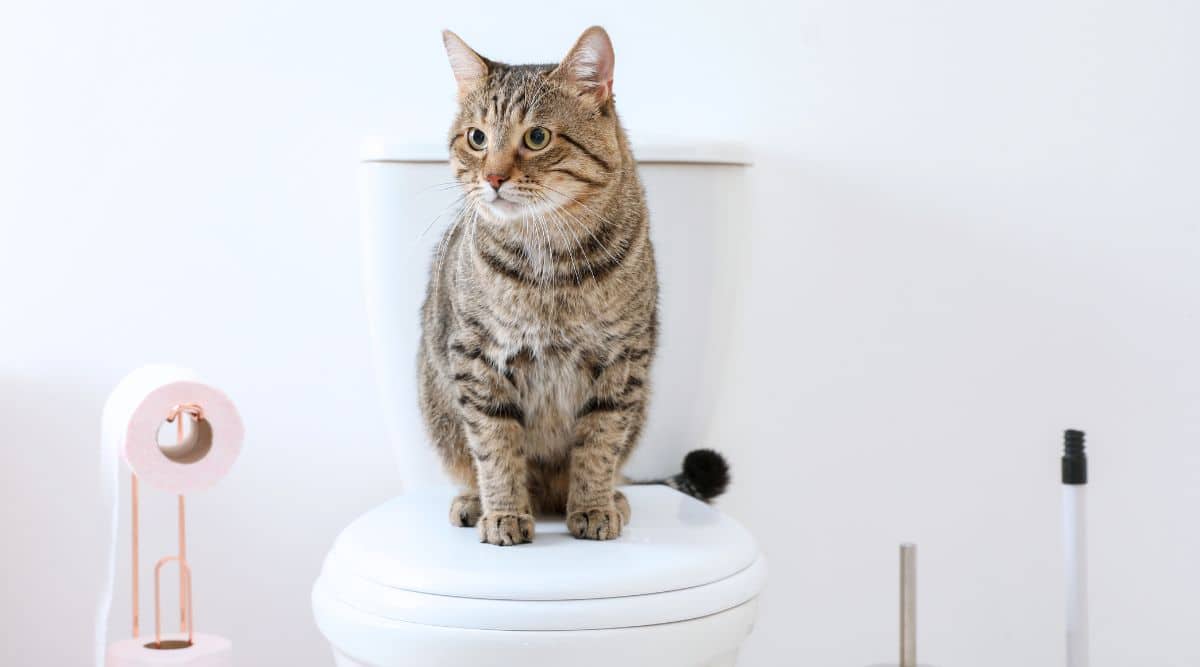The Risks of Flushing Cat Poop in Your Toilet - Precautionary Measures
The Risks of Flushing Cat Poop in Your Toilet - Precautionary Measures
Blog Article
This article which follows on the subject of Can You Flush Cat Poo or Litter Down the Toilet? is really enjoyable. Check it out for your own benefit and decide what you think about it.

Intro
As cat owners, it's vital to bear in mind exactly how we get rid of our feline pals' waste. While it may appear hassle-free to purge cat poop down the commode, this method can have destructive repercussions for both the environment and human wellness.
Environmental Impact
Purging cat poop presents damaging virus and parasites right into the water supply, presenting a substantial danger to marine ecosystems. These pollutants can adversely influence marine life and compromise water quality.
Health Risks
In addition to environmental concerns, flushing cat waste can also pose health risks to humans. Cat feces may include Toxoplasma gondii, a parasite that can cause toxoplasmosis-- a possibly extreme disease, especially for expecting women and people with weakened body immune systems.
Alternatives to Flushing
The good news is, there are more secure and extra liable means to take care of cat poop. Think about the complying with choices:
1. Scoop and Dispose in Trash
The most usual approach of dealing with pet cat poop is to scoop it into a biodegradable bag and toss it in the trash. Make certain to make use of a dedicated clutter scoop and take care of the waste without delay.
2. Use Biodegradable Litter
Go with biodegradable pet cat trash made from materials such as corn or wheat. These litters are eco-friendly and can be safely taken care of in the garbage.
3. Hide in the Yard
If you have a backyard, consider burying feline waste in a marked area far from vegetable yards and water resources. Be sure to dig deep sufficient to stop contamination of groundwater.
4. Set Up a Pet Waste Disposal System
Purchase a pet dog garbage disposal system particularly created for feline waste. These systems utilize enzymes to break down the waste, lowering smell and ecological effect.
Conclusion
Responsible pet dog ownership prolongs beyond supplying food and shelter-- it additionally includes appropriate waste management. By avoiding flushing feline poop down the commode and choosing different disposal methods, we can lessen our environmental impact and protect human health.
Why Can’t I Flush Cat Poop?
It Spreads a Parasite
Cats are frequently infected with a parasite called toxoplasma gondii. The parasite causes an infection called toxoplasmosis. It is usually harmless to cats. The parasite only uses cat poop as a host for its eggs. Otherwise, the cat’s immune system usually keeps the infection at low enough levels to maintain its own health. But it does not stop the develop of eggs. These eggs are tiny and surprisingly tough. They may survive for a year before they begin to grow. But that’s the problem.
Our wastewater system is not designed to deal with toxoplasmosis eggs. Instead, most eggs will flush from your toilet into sewers and wastewater management plants. After the sewage is treated for many other harmful things in it, it is typically released into local rivers, lakes, or oceans. Here, the toxoplasmosis eggs can find new hosts, including starfish, crabs, otters, and many other wildlife. For many, this is a significant risk to their health. Toxoplasmosis can also end up infecting water sources that are important for agriculture, which means our deer, pigs, and sheep can get infected too.
Is There Risk to Humans?
There can be a risk to human life from flushing cat poop down the toilet. If you do so, the parasites from your cat’s poop can end up in shellfish, game animals, or livestock. If this meat is then served raw or undercooked, the people who eat it can get sick.
In fact, according to the CDC, 40 million people in the United States are infected with toxoplasma gondii. They get it from exposure to infected seafood, or from some kind of cat poop contamination, like drinking from a stream that is contaminated or touching anything that has come into contact with cat poop. That includes just cleaning a cat litter box.
Most people who get infected with these parasites will not develop any symptoms. However, for pregnant women or for those with compromised immune systems, the parasite can cause severe health problems.
How to Handle Cat Poop
The best way to handle cat poop is actually to clean the box more often. The eggs that the parasite sheds will not become active until one to five days after the cat poops. That means that if you clean daily, you’re much less likely to come into direct contact with infectious eggs.
That said, always dispose of cat poop in the garbage and not down the toilet. Wash your hands before and after you clean the litter box, and bring the bag of poop right outside to your garbage bins.
https://trenchlesssolutionsusa.com/why-cant-i-flush-cat-poop/

Hopefully you enjoyed our article about How to Dispose of Cat Poop and Litter Without Plastic Bags. Thanks for taking a few minutes to read our blog. Kindly set aside a second to share this entry if you enjoyed reading it. I treasure reading our article about Can You Flush Cat Poop Down The Toilet?.
Book 24/7 Report this page